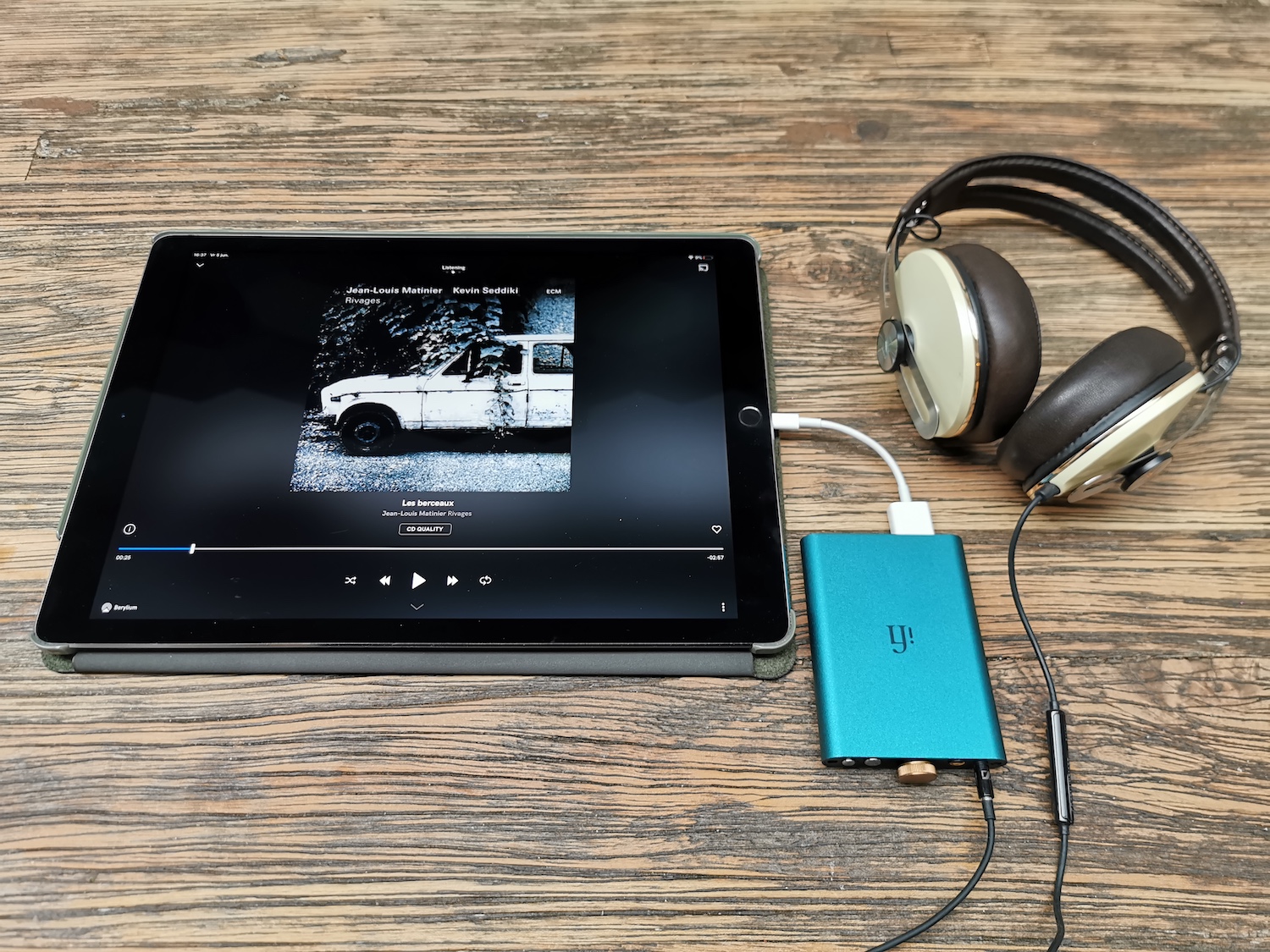
With PCM data, the six most significant bits are converted to analog in the conventional manner, while the lower bits are converted to DSD before being converted to analog. (BTW, cyan indicates DSD up to 6.1MHz, blue indicates DSD at 11.3 and 12.3MHz, and magenta indicates MQA.) (Those last two are also known as DXD.) I wish that 88.2 and 96kHz were included in the yellow group so users would know that the digital audio is true high-res, which I don’t consider 44.1 or 48kHz to be. If the LEDs are green, that indicates PCM at 44.1, 48, 88.2, or 96kHz, while yellow indicates PCM at 176.4, 192, 352.8, and 384kHz. Multicolor LEDs flanking the volume/power knob indicate the type of digital signal being received.

It also supports DSD (Direct Stream Digital), the format of SACDs, up to 12.3MHz, as well as MQA (Master Quality Authenticated) files. The digital signal then encounters the custom-programmed Burr-Brown DSD1793 DAC, which can accommodate PCM sampling rates up to 384kHz and bit depths up to 32 bits.

The hip-dac can be powered by the USB port on a computer without using its internal battery.
#Ifi dac app for mac pro
Users can even experiment with different digital filters, such as the GTO filter from the company’s high-end Pro iDSD DAC/amp. The clock is also applied to the Master Control Unit and custom-programmed XMOS processing chip, which can be updated with new firmware. To use USB power, connect the hip-dac to the source first, then turn on its power to use battery power, turn it on before connecting it to the source device.ĭigital audio enters the hip-dac through the asynchronous USB Type A port regulated by iFi’s precision global clock system, which effectively eliminates any jitter.
#Ifi dac app for mac manual
The manual recommends using battery power with iOS and Android devices, which don’t have enough juice to power the unit. In addition to the battery, the hip-dac can be powered directly from the USB port on a computer. The rear of the unit holds a USB-A female connector for audio (and power from a computer) and a USB-C port for charging its internal battery. The hefty 2200mAh battery is rated to last around eight to 12 hours, depending on the volume level and how power-hungry the headphones are.

The other port on the back is USB-C for charging the battery, and the hip-dac comes with a USB-A-to-USB-C cable to plug it into a USB charger. I wish the hip-dac came with one, but I suppose that could be an Apple licensing issue. You need an Apple Lightning-to-USB Camera Adaptor cable (sold separately) to connect an iOS device. The hip-dac comes with a short USB-Male-to-USB-Female cord for connecting to a computer as well as a short USB-C-to-USB-Female cord for connecting to an Android device. According to iFi, this provides greater mechanical integrity than the typical female USB connector or Mini/Micro-USB ports found on many such products. Interestingly, this port is a male connector with some space around it. The larger USB 3.0 Type A port connects to the source device and accepts a digital-audio signal. The front of the iFi hip-dac includes (L-R) the PowerMatch button, XBass button, volume/power knob, 4.4mm balanced output, and 3.5mm single-ended output. On the inside, the company claims to use premium audiophile components throughout. Speaking of the volume knob, it feels very solid with smooth, well-damped motion in fact, the entire unit feels very sturdy with a solid extruded-aluminum casing. With a protruding volume knob, it bears a strong resemblance to a small hip flask for booze, which might be the inspiration for its name. The iFi hip-dac is smaller than most smartphones, measuring 4.0 x 2.8 x 0.6 inches (LxWxH) and weighing only 4.4 ounces. After spending some time with it tethered to my iPhone, all I can say is, Wow! (Okay, I can say more than that…) Features So, the best way to improve the sound quality is to use an outboard DAC/amp.īritish audiophile company iFi offers an elegant, high-end solution to this problem with its new hip-dac, a small DAC and headphone amplifier. This is primarily attributable to the phone’s built-in DAC (digital-to-analog converter) and headphone amplifier. The most common source for music on the go is a smartphone, but unfortunately, the sound quality of many smartphones is sorely lacking. And for many, sound quality is critically important. People now have access to an almost infinite variety of music anywhere they happen to be.
#Ifi dac app for mac portable
Portable audio is one of the fastest-growing segments of the audio market, and for good reason.


 0 kommentar(er)
0 kommentar(er)
